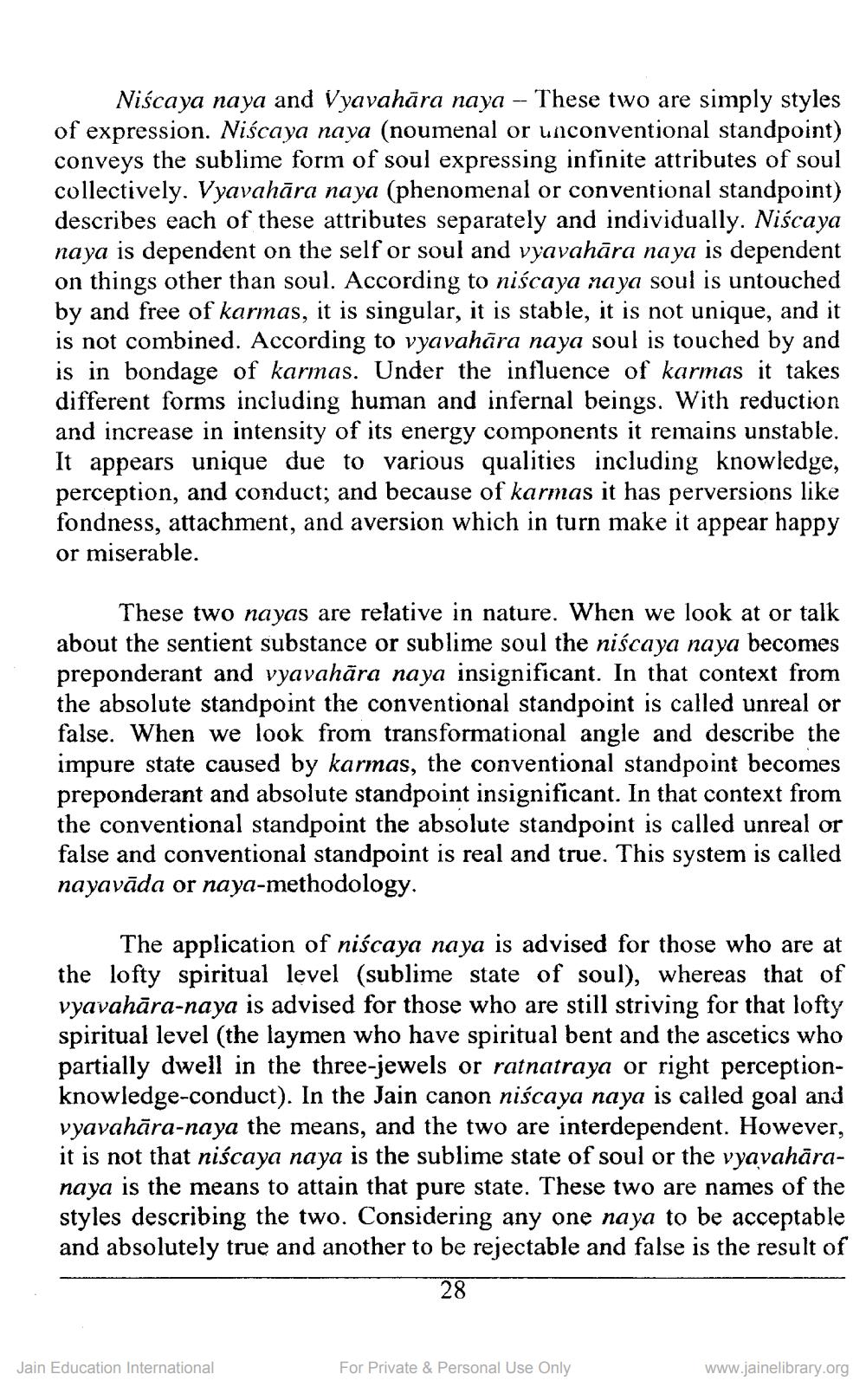________________
Niścaya naya and Vyavahāra naya -- These two are simply styles of expression. Niścaya nava (noumenal or unconventional standpoint) conveys the sublime form of soul expressing infinite attributes of soul collectively. Vyavahāra naya (phenomenal or conventional standpoint) describes each of these attributes separately and individually. Niścaya naya is dependent on the self or soul and vyavahāra naya is dependent on things other than soul. According to niścaya naya soul is untouched by and free of karmas, it is singular, it is stable, it is not unique, and it is not combined. According to vyavahāra naya soul is touched by and is in bondage of karmas. Under the influence of karmas it takes different forms including human and infernal beings. With reduction and increase in intensity of its energy components it remains unstable. It appears unique due to various qualities including knowledge, perception, and conduct; and because of karmas it has perversions like fondness, attachment, and aversion which in turn make it appear happy or miserable.
These two nayas are relative in nature. When we look at or talk about the sentient substance or sublime soul the niscaya naya becomes preponderant and vyavahāra naya insignificant. In that context from the absolute standpoint the conventional standpoint is called unreal or false. When we look from transformational angle and describe the impure state caused by karmas, the conventional standpoint becomes preponderant and absolute standpoint insignificant. In that context from the conventional standpoint the absolute standpoint is called unreal or false and conventional standpoint is real and true. This system is called nayavāda or naya-methodology.
The application of niscaya naya is advised for those who are at the lofty spiritual level (sublime state of soul), whereas that of vyavahāra-naya is advised for those who are still striving for that lofty spiritual level (the laymen who have spiritual bent and the ascetics who partially dwell in the three-jewels or ratnatraya or right perceptionknowledge-conduct). In the Jain canon niscaya naya is called goal and vyavahāra-naya the means, and the two are interdependent. However, it is not that niscaya naya is the sublime state of soul or the vyavahāranaya is the means to attain that pure state. These two are names of the styles describing the two. Considering any one naya to be acceptable and absolutely true and another to be rejectable and false is the result of
28
Jain Education International
For Private & Personal Use Only
www.jainelibrary.org




